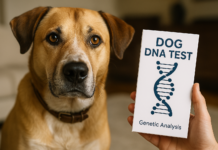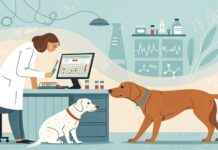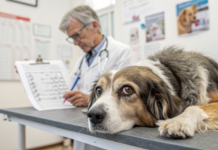Last Updated on January 23, 2024 by Dogs Vets
10 Important Surgical Instruments For Vets
Veterinary surgery is a highly skilled and intricate field, requiring not only extensive knowledge but also a specific set of tools. For veterinary professionals, having the right surgical instruments is crucial for ensuring successful outcomes in various procedures.
This article delves into ten essential surgical instruments used by veterinarians, highlighting their purposes and importance in animal healthcare.
1. Scalpels
The scalpel is a fundamental tool in any surgical kit. Vets use this sharp instrument for making precise incisions. Its importance lies in its ability to create clean cuts with minimal trauma to the tissue, which is vital for reducing recovery time and infection risks.
2. Scissors
Surgical scissors come in various shapes and sizes, each designed for specific tasks. They are used for cutting tissues, and sutures, and sometimes for dissecting. The precision and sharpness of these scissors are paramount in preventing tissue damage and ensuring a smooth surgical process.
3. Forceps
Forceps are the gripping hands of the surgeon in the operating theatre. They come in different types, such as hemostatic, tissue, and dressing forceps. Their primary function is to hold and manipulate tissues delicately without causing unnecessary trauma.
4. Surgical Drills
Veterinary surgical drills are indispensable in orthopaedic surgeries. These power tools allow vets to bore holes in bones for procedures like fracture repair and implant placement. Their precision and power make them a vital asset in ensuring the structural integrity of the skeletal repairs.
5. Retractors
Retractors are used to hold back tissues such as skin, muscles, or organs, allowing vets clear visibility and access to the surgical site. They are crucial in both open and minimally invasive surgeries for maintaining a safe and manageable operating field.
6. Suture Materials
Sutures are used for closing wounds or surgical incisions. They come in various types, including absorbable and non-absorbable materials. The choice of suture material depends on the type of tissue being sutured and the required healing time.
7. Needle Holders
These instruments are designed to securely hold needles while suturing tissues. A good needle holder must have a firm grip to prevent slipping and ensure precise suture placement, which is critical for wound healing and scar formation.
8. Surgical Staples and Staplers
In some cases, surgical staples are preferred over sutures for closing wounds. They are quicker to apply and can be more effective in securing large incisions or wounds. Staplers are used for applying these staples uniformly and quickly.
9. Electrosurgical Units
Electrosurgical units are used for cutting and coagulating tissue using high-frequency electrical currents. They are particularly useful in reducing blood loss during surgery and in performing precise tissue removal.
10. Endoscopic Equipment
Endoscopes allow vets to perform minimally invasive surgeries. They are vital for diagnostic and therapeutic procedures within body cavities, such as the abdomen or thorax, offering a less invasive alternative to open surgery.
The Significance of Surgical Instruments
The array of surgical instruments available to veterinarians is crucial for the diverse range of procedures they perform. From the precision of scalpels to the power of veterinary surgical drills, each tool plays a pivotal role in ensuring the health and wellbeing of animals.
The evolution and improvement of these instruments continue to expand the capabilities of veterinary medicine, making surgeries safer, more efficient, and less invasive.
As the field advances, so too will the tools of the trade, continuing to enhance the quality of veterinary care.
Facts Check
We hope you enjoyed this article… What are your thoughts? Please feel free to share this article! and remember to contribute and advertise with us.

















